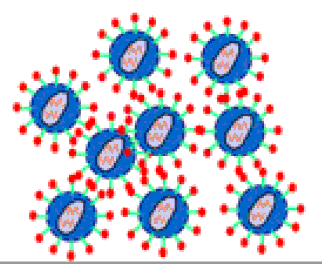Papers in the Biological Sciences

Qingsheng Li Publications
Document Type
Article
Date of this Version
4-2009
Citation
Vol 458:23 April 2009 doi:10.1038/nature07831
Abstract
Although there has been great progress in treating human immunodeficiency virus 1 (HIV-1) infection1, preventing transmission has thus far proven an elusive goal. Indeed, recent trials of a candidate vaccine and microbicide have been disappointing, both for want of efficacy and concerns about increased rates of transmission2–4. Nonetheless, studies of vaginal transmission in the simian immunodeficiency virus (SIV)–rhesus macaque (Macacca mulatta) model point to opportunities at the earliest stages of infection in which a vaccine or microbicide might be protective, by limiting the expansion of infected founder populations at the portal of entry5,6. Here we show in this SIV–macaque model, that an outside-in endocervical mucosal signalling system, involving MIP-3α (also known as CCL20), plasmacytoid dendritic cells and CCR5+ cell-attracting chemokines produced by these cells, in combination with the innate immune and inflammatory responses to infection in both cervix and vagina, recruits CD4+ T cells to fuel this obligate expansion. We then show that glycerol monolaurate—a widely used antimicrobial compound7with inhibitory activity against the production of MIP-3α and other proinflammatory cytokines8—can inhibit mucosal signalling and the innate and inflammatory response to HIV-1 and SIV in vitro, and in vivo it can protect rhesus macaques from acute infection despite repeated intra-vaginal exposure to high doses of SIV. This new approach, plausibly linked to interfering with innate host responses that recruit the target cells necessary to establish systemic infection, opens a promising new avenue for the development of effective interventions to blockHIV-1 mucosal transmission.


Comments
U.S. Government Work